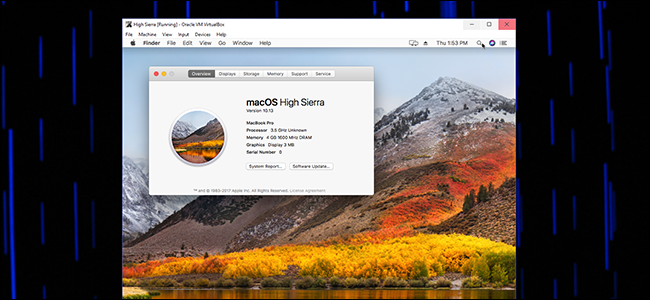

- Mac os high sierra features linux how to#
- Mac os high sierra features linux upgrade#
- Mac os high sierra features linux software#
- Mac os high sierra features linux download#
Mac os high sierra features linux upgrade#
When the OS is generally available in the fall of 2017, it will be offered as a free upgrade to existing Mac users through the Mac app store. It’s not a precise replacement, but it’s all you’ve got now.Apple recently unveiled macOS High Sierra, version 10.13 of its desktop and laptop OS. It turns out they’re just gone.įor iOS folder sharing, Apple recommends users turn to the built-in collaboration options in Pages, Numbers, and Keynote. If you were a fan of FTP, or file sharing with iOS, you might be wondering where they went. But what was a paid feature is now free, so pros and cons I suppose. This isn’t a complete replacement: Git repositories can no longer be locally hosted, for example. The Xcode Server functionality is now found in Xcode itself: just click Xcode > Xcode Server in the menu bar and you can enable the feature. An Xcode server allows multiple people to work on the same project at once, and until recently creating an Xcode server required macOS Server. Xcode is Apple’s development environment, and is widely used to make macOS and iOS software.
Mac os high sierra features linux software#
Just like that your macOS, iOS, and Apple TV devices will have a local cache to work with for everything from iTunes downloads to software updates.
Mac os high sierra features linux download#
Content caching speeds up downloads on all Apple devices by storing anything you download locally, meaning they’ll download nearly instantly the second time.Įnabling this feature previously required macOS Server, but with High Sierra you can simply head to System Preferences > Sharing and enable the “Content Caching” option. If you live in a house with multiple Apple devices, you’re probably using up bandwidth on downloading the same updates, media, and iCloud documents to each individual update.
Mac os high sierra features linux how to#
RELATED: How to Speed Up Downloads on Your Mac, iPhone, and iPad with Content Caching You could set up a dedicated Time Machine server, or you could back up your Macs to each other. Just like that, all computers on your network will see your shared folder as a potential Time Machine destination. Now you can simply open Advanced Options for a folder and enable Time Machine. Previously it was only proper to run a proper Time Machine server using macOS Server, unless you were willing to use a workaround. Speaking of the Advanced Options: you can now set up your Mac as a networked Time Machine drive. RELATED: How to Set Up Your Mac to Act as a Networked Time Machine Drive This is by no means a feature complete replacement for what was offered by macOS Server, but it gets the major features, and it’s more than non-Server users had before. You also have the option to allow or block guest users, and only allow encrypted connections. If youshare a folder on a macOS Extended (HFS+) drive, you’ll still have the option for AFP. AFP is incompatible with APFS, Apple’s new file system, so that option will be greyed out on APFS drives, as shown above. RELATED: APFS Explained: What You Need to Know About Apple's New File SystemĪFP was Apple’s proprietary protocol SMB is the open source, windows-compatible protocol Apple now recommends. The first field will ask whether you’re sharing over SMB, AFP, or both. Right click a shared folder, then click “Advanced Options” to find them. The preference pane has a few new advanced features, previously exclusive to Server, in order to ease this transition. Instead, everything to do with file sharing is found in System Preferences under Sharing. It’s weird, but the latest version of macOS Server doesn’t offer local network file sharing.


 0 kommentar(er)
0 kommentar(er)
